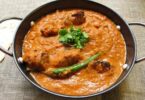How To Make Better Food Choices
Eating healthy ain’t as easy as it sounds. And I’m not just talking about the abundance of sinful indulgences, desserts and snack foods… Many of the foods we choose are not as healthy as they may seem. Many consumers are oblivious to what they are actually eating. A critical tool for making better food choices is learning how to read food labels.
Reading Food Labels
Reading labels helps us make better food choices. Yet, label reading is perplexing at best. To assist in increasing the ease of label reading, the FDA has proposed bringing “important” information from the back of a package and listing it on the front (Front of Package Nutrition Labeling, FOPNL). The CDC published a study, “Evaluation of Consumer Understanding of Different Front-of-Package Nutrition Labels, 2010–2011”, evaluating the effectiveness of FOPNL. The study tested 4 different types of labels that focus on calories, saturated fat, sugar, and sodium, check out the images here. The labels used in the study improved healthier food choices when compared with products that did not use FOPNL.
Is this a step in the right direction? Maybe. But, why not increase the size of the ingredient section and put that in the front of the package?
Food Ingredients You Should Not Consume
There are just certain ingredients that you should not consume.
Read More: No More Secret Ingredients and Secret Ingredients Are Not A Secret
Why not, take the effort and campaign money and steer the consumer to items that do not have labels, real foods like fresh vegetables and fruits?
The FOPNL certainly can work in favor of selectively focusing on certain health buzzwords like low-fat or low-calories but if food is processed and there are more than one serving to a package and the calories are low because they contain non-nutritive artificial sweeteners, it is deceptive. Because, although calories and sugar are low, so is nutritional value.
Select High Nutritional Quality Foods
When foods with high nutritional value are consumed like avocado or coconut, they contain higher calories and fat. However, higher amounts of fiber, vitamins, and minerals are found in these foods when compared with 100 calorie snack packs. Feeding on high-fat healthful foods provide the nutrients that make your body work and the nourishment that keep your blood sugar stable and appetite in control.
Label Reading Wrap up
If you read a label as it is proposed by the FDA, your choice will not focus on healthful foods to eat more of but what to stay away from which leaves you somewhat up in the air as to what is a healthy food choice. It also gives food companies a way to divert you from the most important part of a label, the ingredients section.
Learn how to read a label and what really counts when making healthier food options with my book, The Stubborn Fat Fix.
I do not need research results to sway my practical opinion. I believe that consumers are smart and understand that if you want a low-calorie food eating non-starchy vegetables gives you the most nutrient bang for the calorie “buck”. If you are in denial and think a 100 calorie processed snack pack is going to make you healthier and weigh less over the long-term, I have a bridge to sell you.
Do not be fooled by FOPNL. Use your common sense to make healthier food choices.







[…] by coating yourself with sunscreen? Maybe not! Read the label on your suntan lotion (just like reading food labels) to pick the sunscreen with safe sunscreen […]